The Virtues Of The 8-Bit Era : Eight Iconic Processor Designs
Why do the 8-bit designs of the 1970s generate so much enthusiasm?
For some readers, when we talk today about ‘8-bit’ then it probably evokes a certain aesthetic : simple, blocky, colourful design. I think for anyone who was around at the time, though, it also generates a lot of nostalgia.
A whole generation, including I’m sure many Chip Letter readers, wrote their first programs on 8-bit systems. Those systems of the 1970s and the early 1980s made computing available, for the first time, to almost everyone. It was a formative time for many people who went on to build their careers in computing, and many who would play a key role in the development of modern computing.
This nostalgia explains a lot of the enduring enthusiasm for ‘8-bit’.
On top of simple nostalgia, I think that there are lots of other reasons why there is so much affection for ‘8-bit’. Today’s systems are much, much more powerful and capable, but in adding that power, we’ve also lost something too. From the perspective of someone interested in how their computer worked at a ‘low-level’ and who wanted to program it at that level, then these systems had several attractions.
Simplicity
With some practice, you could keep the whole of an 8-bit processor’s instruction set in your head. Doing some of the things that we take for granted from hardware today (e.g. floating-point arithmetic) was difficult, but on the whole the low-level operation of these systems was much more approachable.
Documentation
One side effect of simplicity, was that documenting every aspect of a computer in a single, readable, document was possible. 8-bit systems often came with great, both thorough and readable, documentation. If you wanted more then there was probably a comprehensive book covering assembly language for your processor of choice, available at your local bookstore.
Close To The Metal
Graphics and sound weren’t hidden behind ‘APIs’. There might be a rudimentary operating system but for the best performance, then you probably had to write code that interacted with the hardware directly.
High level languages were often too slow and commercial software had to be written in assembly language to get the required performance. And the simplicity of the processor design meant that it was usually possible and relatively straightforward to reason about the performance of assembly language code.
“Open Source”
I’ve deliberately put Open Source here in inverted commas. Software of the era wasn’t open source in the modern sense. It was sometimes ‘source available’ though in the sense that software writers published their source code. I still have a copy of the book ‘Sargon : A Computer Chess Program’ which listed a chess program, written in 8080 assembly, in full.
And if the software writers didn't publish their own source then sometimes it would be disassembled and made widely available.
Starting an Entrepreneurial Era for Hardware and Software
Perhaps most of all though, it was an era that saw a flourishing of hardware and software innovation and entrepreneurship : in microprocessors, in other semiconductors, in the computers that used them and the software that ran on those computers.
Many famous names started or flourished in this era: Intel, Apple, Microsoft, Atari, Commodore, Nintendo and others. Plus numerous less familiar names that nonetheless had a huge impact: Mostek, MOS Technology, Zilog, Acorn, and lots more. Not forgetting innovative software like VisiCalc.
And 8-bit processors never went away. They became the basis for billions of microcontrollers, hidden away in devices in homes, offices and factories.
I’m not completely overcome by nostalgia. 8-bit was the era of 64k memory, floppy disks, monochrome screens and so on. I wouldn't want any of these back.
There is an enduring appeal to the simplicity and accessibility of ‘8-bit’ though.
In the rest of this post, we’ll have a brief look at eight iconic microprocessors of the 8-bit era.
First though, paying subscribers can vote to select one of these designs for a more detailed history. I’ve omitted the 6502 as we’ve covered it in some detail already. Do please vote and let me know which you’d like covered next. And let me know if you think I’ve missed an important design.
Intel 8008
Intel : 1972
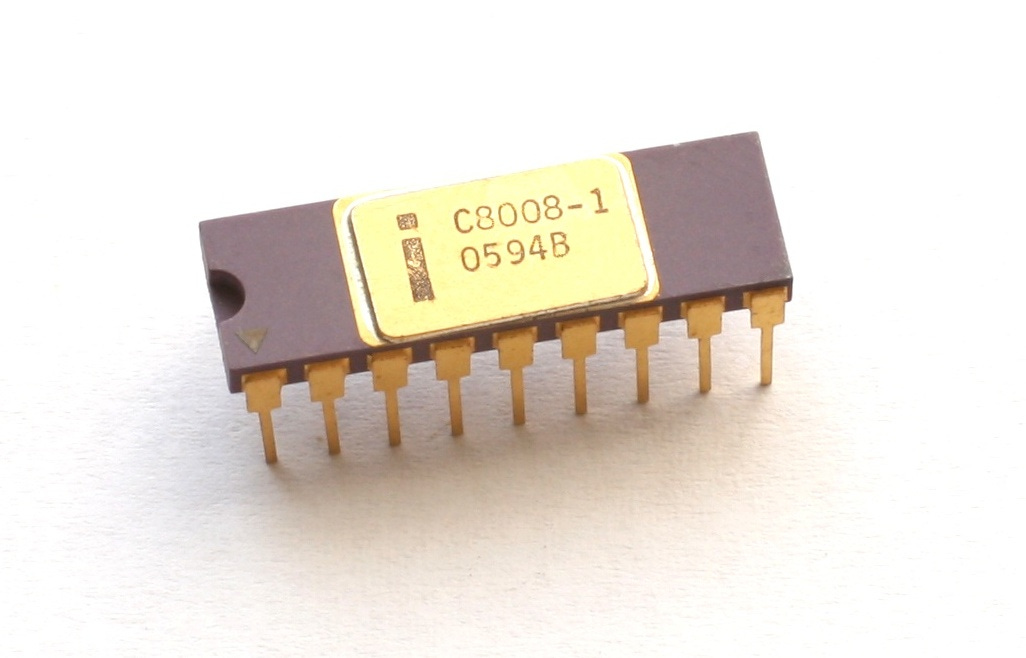
Used in : Intel Intellec-8 Development System
The first 8-bit microprocessor. Designed and built by Federico Faggin and his team at Intel in response to a commission from terminal manufacturer Computer Terminal Corporation. The chip was originally meant to replace the ‘discrete’ logic of the Datapoint 2200 terminal, it was never used for its original purpose.
As is often the case Ken Shiriff has a series of great posts analysing the 8008’s die together with lots of detail on its history, starting here and with follow-ups here, here and here.
Quirks : 16 pin package so heavy use of multiplexing was needed. 14-bit program counter.
Intel 8080
April 1974
Used in : Altair 8800
Intel followed the 8008 with the code compatible 8080 in 1974, again designed under the supervision of Federico Faggin.
The 8080 ‘filled out’ gaps in the 8008’s instruction set and expanded addresses to 16-bit giving a maximum memory size of 64 KB. It moved to a 40-pin dual-in-line package, avoiding the need to multiplex address and data loads.
Notable facts : Microsoft’s first product, Microsoft BASIC, was written for the Intel 8080.
Motorola MC 6800
1974

Used in : many industrial applications.
Motorola’s entrant into the microprocessor market was the MC 6800. Unlike the 8008 and the 8080 it was a design built from scratch, although modelled somewhat after the PDP-11 minicomputer. It also took quite a different approach to the 8080, with fewer registers and a more ‘regular’ instruction set.
Quirks : The design supported Direct Memory Access for peripherals - the 6800’s access to the address bus could be disabled.
Fairchild F8
1974
If Motorola was the promising new entrant to the microprocessor market then Fairchild was the ‘fading star’, as the once pioneering company was gradually drained of talent. Most key employees had already left to start their own semiconductor companies, most notably of course Robert Noyce and Gordon Moore at Intel.
It’s debatable whether the F8 was really a microprocessor, as it needed two chips to deliver the functionality equivalent to a microprocessor like the Intel 8080 or Motorola 6800. It was left to ‘upstart’ Mostek to release a single chip version of the F8, the Mostek 3870.
MOS Technology 6502
1975
Used in : Apple II, Commodore PET, BBC Micro, Commodore 64 and many more (sometimes derivatives of the 6502).
After Motorola made a promising entry with the 6800, much of the team behind that design soon moved on to MOS Technology, where they designed the 6502.
The 6502 used the team’s experience in developing the 6800 but refined the approach to create a design that was both more elegant and could be made more cheaply than the 6800.
For me the 6502 is the iconic design of the 8-bit era. It was an elegant, spare design. Crucially, its low price enabled a new generation of affordable computers from the Apple II to the Commodore PET to the BBC Micro that, quite simply, changed the world.
I’ve written about the 6502 before, with ‘65 Reasons to Celebrate the 6502’.
Zilog Z80
March 1976
Used in : Tandy TRS-80, Sinclair ZX81, Sinclair ZX Spectrum, MSX and many CP/M compatible computers of the 1970s
Having fallen out with Andy Grove at Intel, Federico Faggin started Zilog, with a focus on building microprocessors, in 1975. The Z80 was an updated version of the Intel 8080. It was code compatible but added more registers and addressing modes.
If Faggin wanted to demonstrate what Intel had lost with his departure, then the Z80 made his point very clearly. It outclassed Intel’s 8085 update of the 8080 in almost every way: it was faster, had a more versatile instruction set and was easier for hardware designers to use in their computers.
Quirks : The Z80’s 8-bit arithmetic was implemented by using a 4-bit arithmetic and logic unit.
National Semiconductor SC/MP
April 1976

Used in : Science of Cambridge (later Sinclair Research) MK14 Single Board Computer
The SC/MP for “Simple Cost-effective Micro Processor” was pronounced ‘SCAMP"‘.
Quirks : The program counter was only 12-bits and moving from one 4KB ‘page’ to another needed special instructions.
Motorola 6809
1978

Used in : Tandy Color Computer, Dragon 32
The 6809 was the last of the ‘classic’ 8-bit microprocessors, used in home and small business computers of the 1970s and early 1980s. It was backwards compatible with the 6800 but added more instructions.
By 1978 the first 16-bit designs such as the 8086 had started to appear. The ‘8-bit era’ was coming to an end.

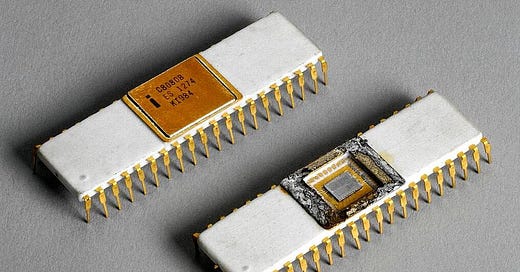



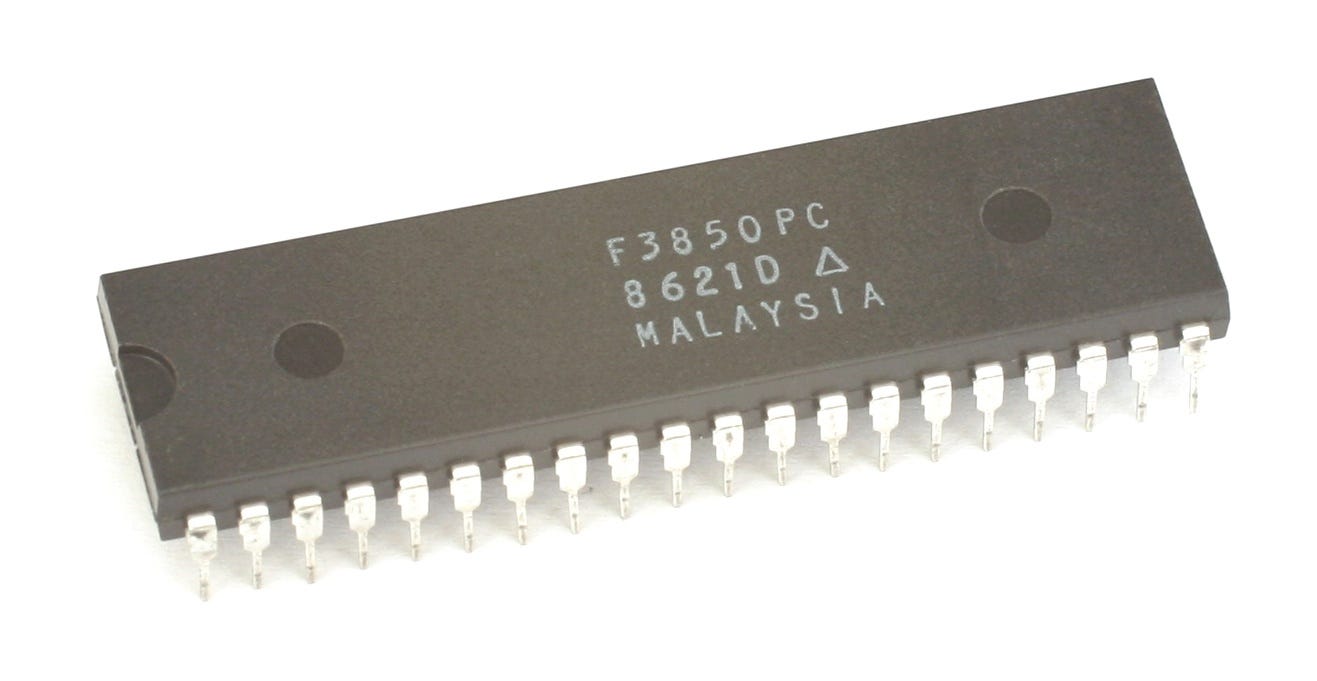
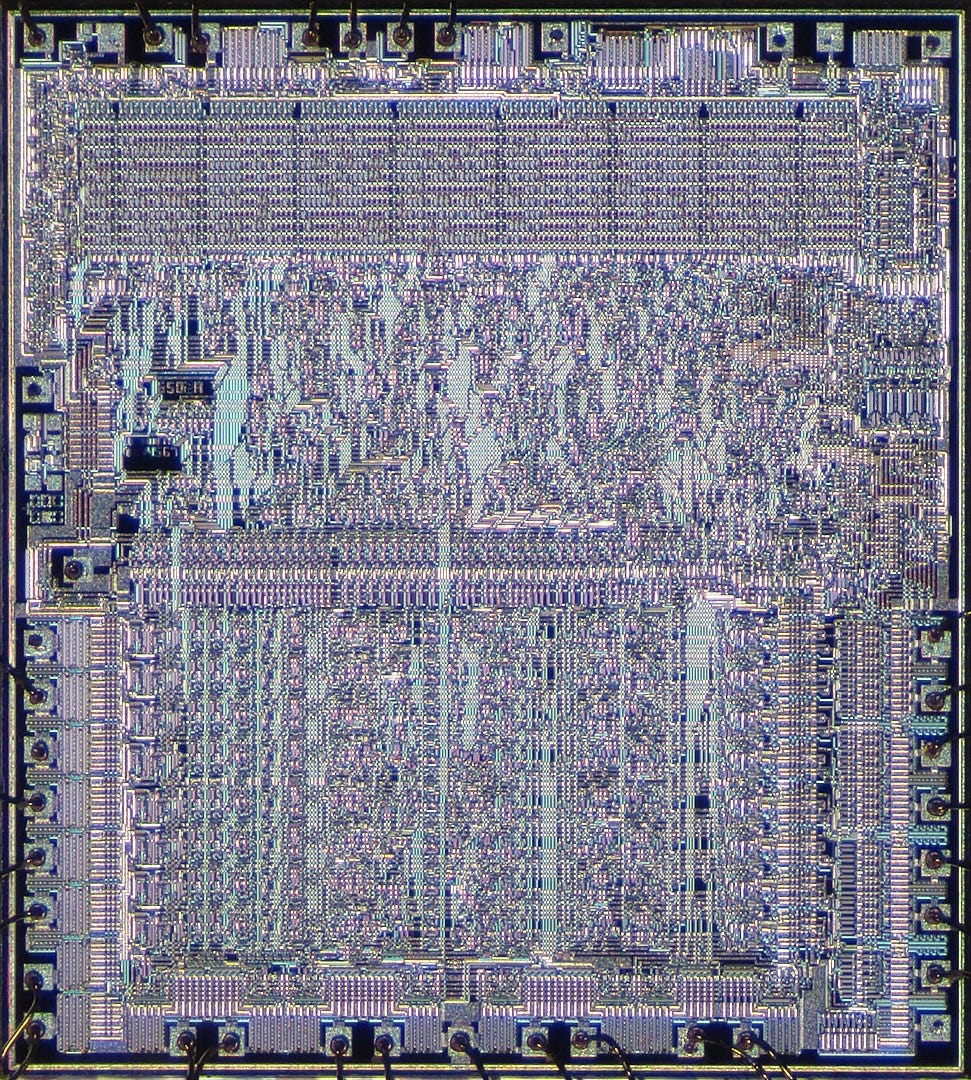

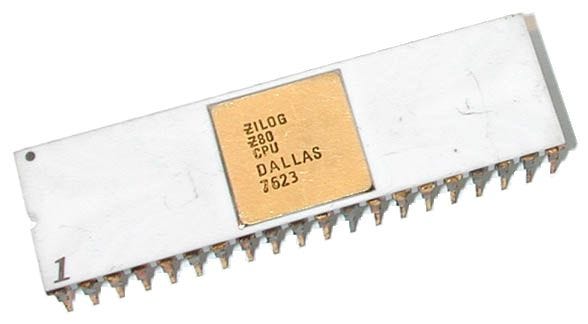
That poll widget is terrible — I can’t tell whether I was allowed to vote in the poll or not, or whether I did vote — I am a subscriber, but the poll is grayed out. I touched it (I’m on an iPad), and it immediately went to the results, and I have no idea whether my vote was registered or ignored. It seems to be indicating I voted for the Intel 8-bits, which was not what I wanted to vote for, but I can’t really tell.
For what it’s worth: IMHO, enough has been written (in incredible detail) elsewhere about the Intel 8008 and derivatives; I’d prefer to see a deep dive on any of the others. The 6809, F8, SC/MP all seem interesting. Z80 a bit less so, just because again it’s a very widely covered/emulated CPU.
The Z80 was also big in at least the GDR (East Germany), not sure how many were exported to other East Bloc countries.
The GDR produced an unlicensed clone, the U880: https://en.wikipedia.org/wiki/U880
It was the CPU for GDR-made computers like the KC 85 (https://en.wikipedia.org/wiki/KC_85) or the (office PC) PC1715 (https://en.wikipedia.org/wiki/PC_1715).